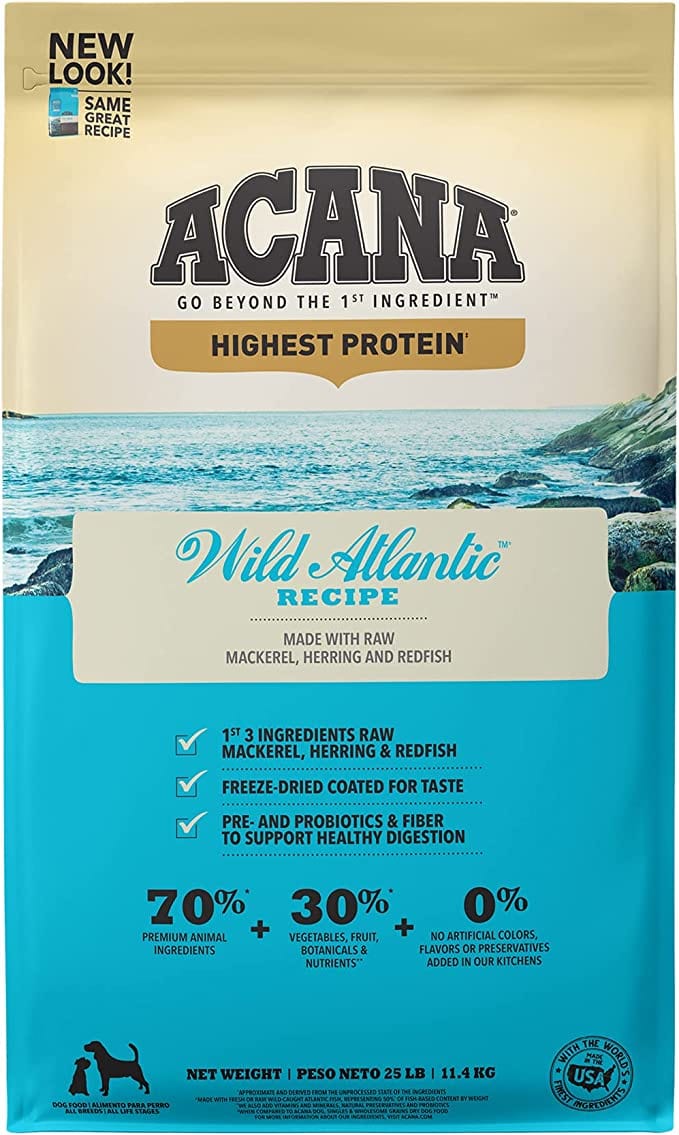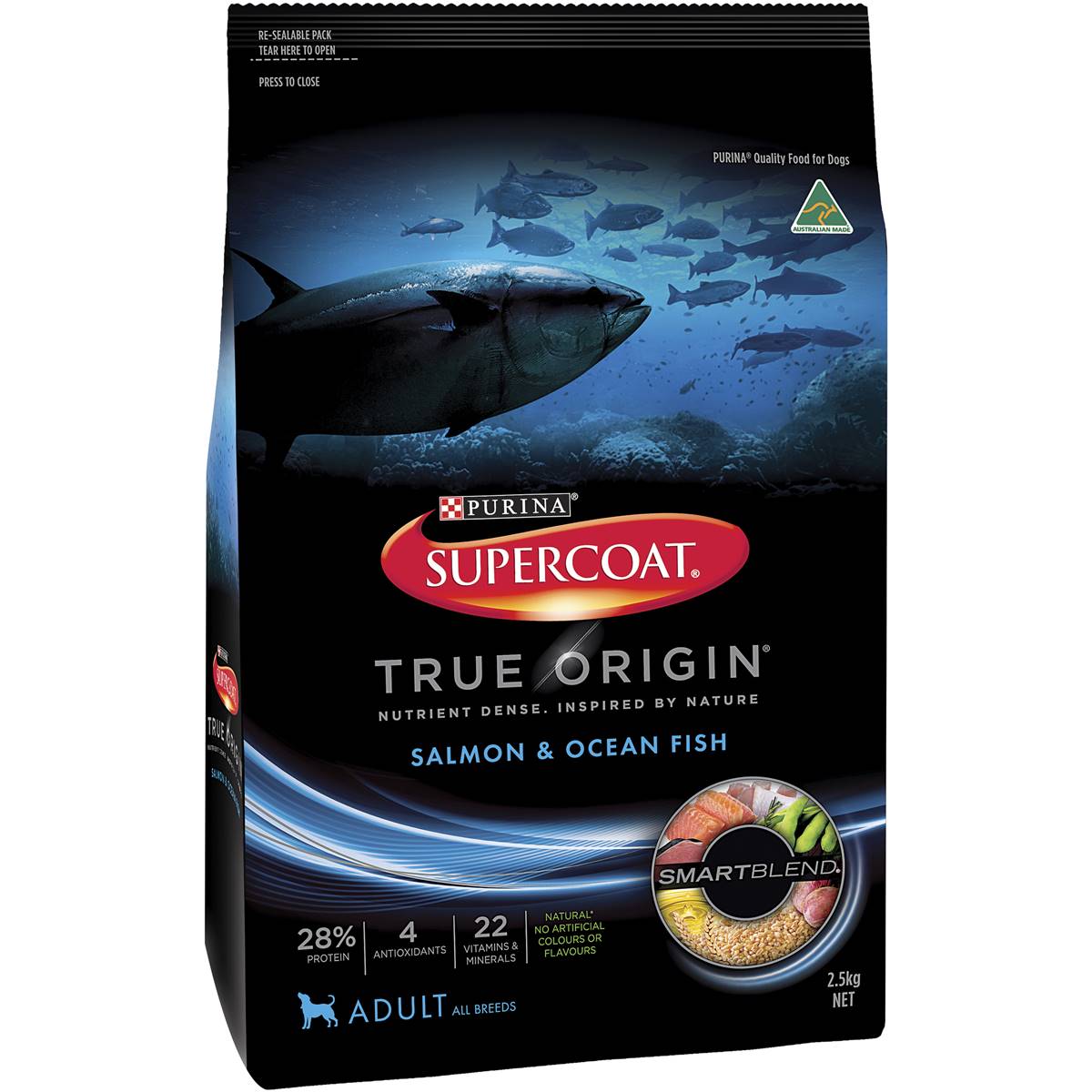The Wave of Health:
Fish-Based Dog Food Unraveled
In the world of pet nutrition, the spotlight is increasingly fixating on the bountiful seas for healthier dog food alternatives. With human-grade fish finding its way into our furry companions’ meals, fish-based dog food is making headlines for its array of wellness benefits. This deep dive will journey through the sweeping advantages, potential concerns, ethical practices, and the delectable nature of aquatically-derived meals, offering a 360-degree view on the value of integrating fish into your dog’s diet.
Nutritional Profile:
A Dive into Richness
Fish stands out in a league of its own when it comes to a stellar nutritional profile for canines. It’s an exemplary source of high-grade protein that mirrors the natural aquatic diet of many canine ancestors, favoring seamless digestion and muscle development. The standout highlight in fish-based diets is the bountiful presence of omega-3 fatty acids. These pivotal unsaturated fats, particularly EPA and DHA, are star players in maintaining lustrous coats and robust skin health. They also underpin the smooth operation of joint health, are pivotal in cognitive development, and maintain retina health.
Besides the universally acclaimed fats, a fish-based doctrine opens the door to an arsenal of other critical nutrients. The vitamins nestled within—A, B, D, and E—propel immune and bone health and undergird metabolic efficacy. Minerals aren’t left behind, with phosphorus, zinc, iodine, and selenium leading the charge in dental, skeletal, and antioxidative functions. These collective elements fortify a dog’s body against diseases and play a proactive role in chronic disease management.

Allergenic Potential:
An Oasis for Sensitive Canines
Navigating the treacherous waters of canine allergies can be a daunting voyage for pet owners. Fish-based dog food shines as a hypoallergenic harbor, serving as a novel protein alternative particularly for dogs that have sailed choppy seas with beef or chicken allergies. This deviation from common protein fare can significantly lessen allergy-inflicted burdens such as itching and gastrointestinal unrest.
Despite its merits, a mindful transition is imperative. As with any dietary shift in a dog’s diet, fish-based food should be introduced incrementally, ensuring compatibility and watching closely for any signs of digestive rebellion or intolerance.
Sustainability and Sourcing:
Casting Nets Responsibly
In an era where the conservation drum beats louder, the origin story of fish-based dog food garners critical inspection. Conscientious pet owners are scanning horizons for brands that anchor their practices in ethically orchestrated fishing, dodging overfished species and espousing the use of sustainable stocks. A contemporary shift seeks the use of less commercially craved fish or synergistically leveraging by-products from human seafood consumables – a stride towards environmental consciousness and culinary efficiency in the pet food realm.
Conscientious brands are echoing this approach, stringently selecting their sourcing methods to support oceanic health and showing a clear preference for fisheries endorsed with sustainability certifications. This marriage of ethics with enterprise stands as a beacon for conservation and responsible industry practices.

Flavor Appeal:
The Siren Call of Taste
Beyond nutrition and ethics, fish-based dog food also ticks the box of palatability, a crucial consideration in convincing canines to consistently consume their daily meals. Many a dog is known to be allured by the distinct, robust flavors that fish provides, marking it as an enticing choice for the fussy gourmands of the canine world. Brands are riding this wave, churning out gastronomic variations spanning salmon, sardines, mackerel, and even exotic fish, catering to the intricacies of canine palates and circumventing the monotony that can lead to food fatigue.
Integration into a Dog’s Diet:
Crafting the Tailored Menu
Transitioning wholly into a fish-based diet necessitates a meticulous assessment of your dog’s nutritional ecosystem. It’s not simply about swapping one protein for another; it’s about ensuring the dietary tapestry remains balanced and complete. This may sometimes require the inclusion of supplementary proteins or chaperoning certain vitamins and minerals to seal any nutritional gaps.
Owners should consult with a veterinary nutritionist, especially if their dog has specific health perimeters that could be at odds with a fish-heavy regimen. Variables such as age, activity level, and existing health conditions can heavily dictate the appropriateness and structure of a fish-centric diet in a dog’s feeding regime.

Packaging and Consumer Education:
Beyond the Bowl
As the market for fish-based dog food expands, considerations around packaging and consumer education become increasingly significant. Eco-friendly packaging choices and the dissemination of accurate nutritional information are critical components in the decision-making process for pet owners.
With a growing awareness of plastic pollution and its detrimental impact on marine ecosystems, companies are being urged to rethink their packaging strategies. Biodegradable and recyclable materials are at the forefront of this shift, allowing companies to minimize their environmental footprint while still providing protection and longevity for their products. This approach not only benefits the planet but also resonates with the eco-conscious consumer who seeks sustainable options in every purchase.
In addition to packaging, there’s a potent tide in consumer education regarding the transparency of sourcing and the benefits of fish-based diets for dogs. Knowledgeable consumers are better equipped to make informed decisions about their pets’ nutrition, investigating labels for the type of fish used, its origins, and the fishing methods employed. As a result, pet food brands are stepping up their efforts to communicate this information clearly and authentically, fostering trust and loyalty among their clientele.
By focusing on packaging excellence and educational integrity, the industry can support the continued growth and acceptance of fish-based dog food, ensuring that the benefits extend beyond the bowl, creating a ripple effect of positive change for our oceans, our pets, and our communities.
Conclusion:
The Tidal Impact of Fish-Based Dog Food
The tempestuous quest for canine nutrition seems to be finding solace in the versatile, health-infused offerings of fish-based dog food. As studies and anecdotes alike cast a glowing aura on its holistic benefits, the trend continues to build momentum. While the environmental narrative and sourcing ethics will inevitably play a part in shaping the future of fish in canine diets, the prevailing winds suggest a favorable outlook. Ethical sourcing, ecological responsibility, and nutritional sophistication converge in this dietary approach, marking not just a fad but a promising horizon in the evolution of dog food. With the right balance, quality controls, and mindful integration, fish might just be the dietary harbinger of health and vitality for our cherished canine companions.

